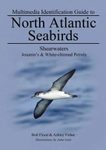Monograph
By: Chris Waltho(Author), John C Coulson(Author)
352 pages, 10 plates with colour photos and colour distribution maps; b/w illustrations, b/w maps, tables
Monograph of the Eider, a large and familiar duck with a long and fascinating cultural history
![The Common Eider The Common Eider]()
Click to have a closer look
About this book
Customer reviews
Biography
Related titles
About this book
A common sight around the more northerly shores of the British Isles, the Common Eider is the largest duck in the northern hemisphere. The eider is particularly well adapted to cold-water environments; the insulating properties of eider down are iconic. The species is taxonomically interesting, with a range of well-marked subspecies reflecting the patterns of ice coverage during ancient glaciations, and these ducks have also provided the focus for a number of important behavioural studies, especially on feeding ecology and energy budgets.
Eiders have a long association with humans, and have deep cultural significance in many societies. However, modern lifestyles are exposing these ducks to a wide range of new pressures.
The Common Eider provides a comprehensive portrait of the Common Eider and the two other species in the genus, the King and Spectacled Eiders. Authors Chris Waltho and John Coulson bring together an extensive and diverse international literature, with sections on taxonomy, habitats, breeding biology, population dynamics, diet and foraging, dispersal and migration, and conservation.
Customer Reviews
Biography
Chris Waltho has studied eiders for more than thirty years, with his research based around the Firth of Clyde, home to the largest population in the British Isles. An experienced aerial surveyor of seaducks and divers, Chris has been the president of the Scottish Ornithologist's Club since 2007.
Over more than 40 years of research, John Coulson has made outstanding contributions to the behavioral ecology of colonially breeding seabirds and our understanding of coloniality in birds. A former Reader in Zoology at the University of Durham, Coulson was awarded the Godman-Savin Medal by the British Ornithologists' Union in 1992.
Monograph
By: Chris Waltho(Author), John C Coulson(Author)
352 pages, 10 plates with colour photos and colour distribution maps; b/w illustrations, b/w maps, tables
Monograph of the Eider, a large and familiar duck with a long and fascinating cultural history
"[...] produced to the usual high standards we have come to expect from this publisher, complete with a section of apposite colour photographs."
– Malcolm Ogilvie, Ibis 157, 2015
"This first English-language monograph on the Common Eider is a welcome addition to the literature. The book provides a global overview of Eider ecology but at the same time incorporates much interesting new material from the author's own field studies in the UK. [...] The book includes new material on such diverse topics as the impacts of mink predation and the extent of egg dumping in the nests of other females. The authors also draw on other UK studies, notably that at the Sand of Forvie, Aberdeenshire where I was fortunate to undertake my own PhD research on this fascinating species in the late 1970s. [...] Overall the book contains a wealth of information and I strongly recommend it to anyone with an interest in this species."
– Stephen Baillie, BTO News, issue 314












































